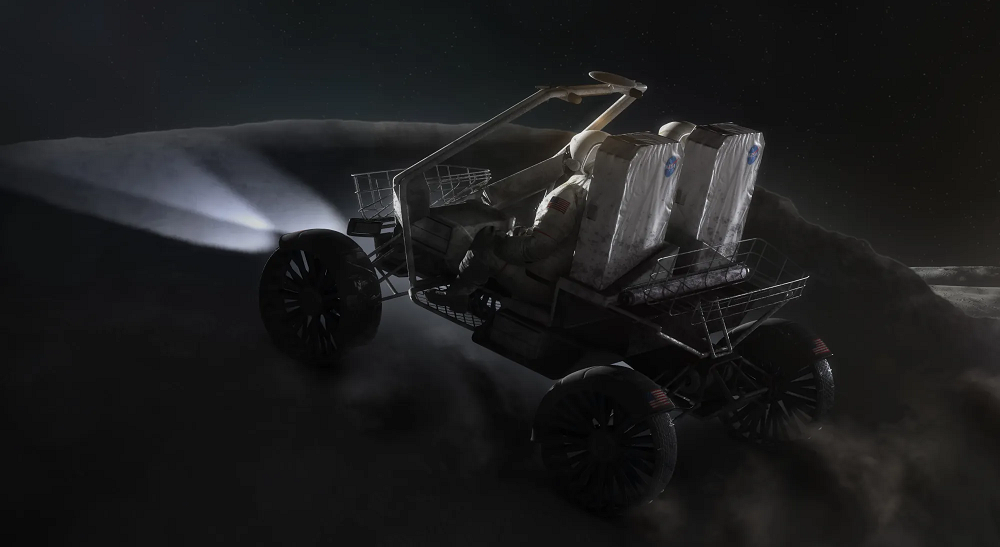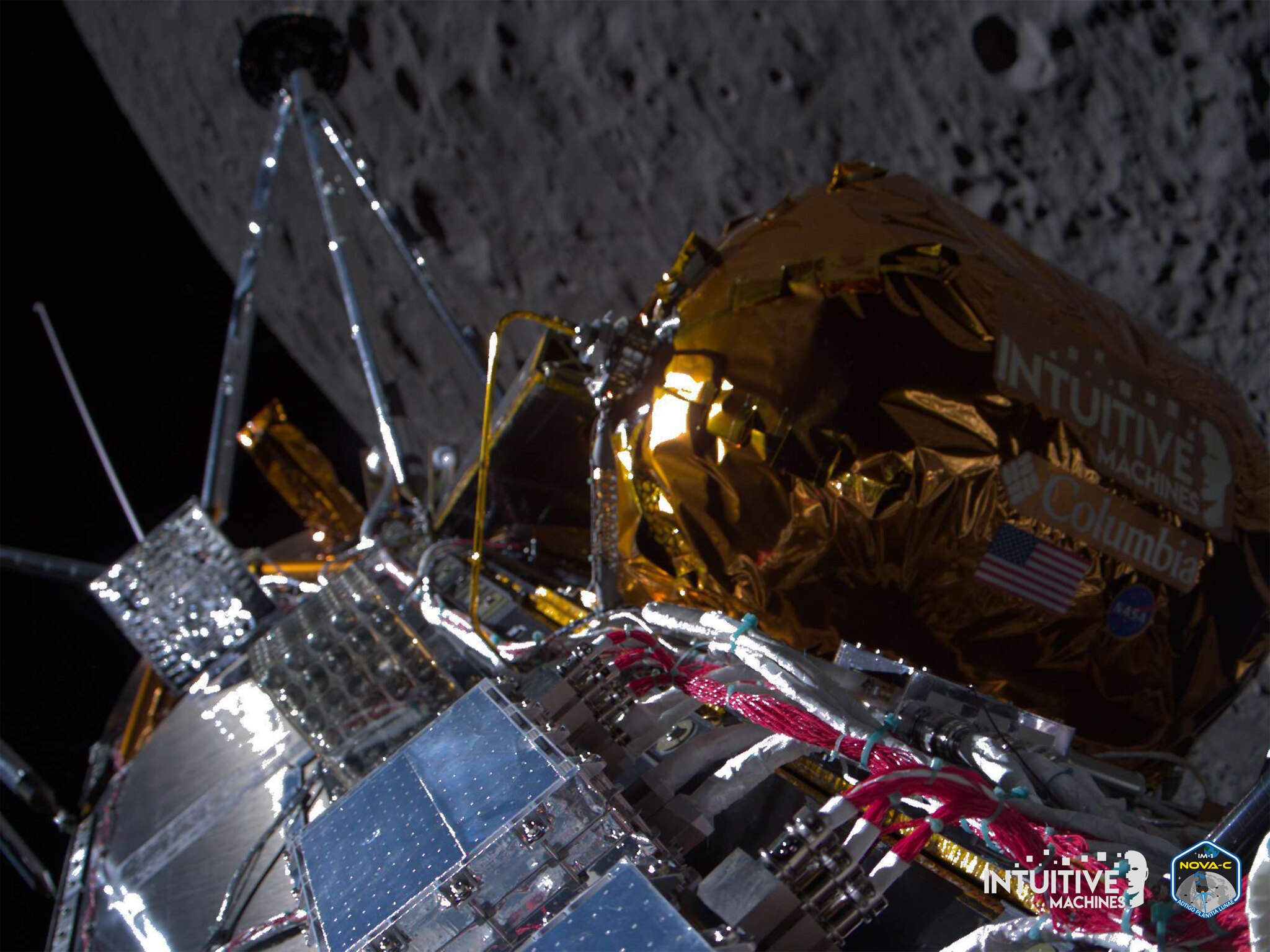Space Foundation JSEP Program Boosts Students’ Interest in STEM Courses
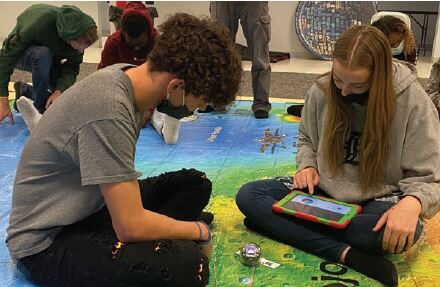 One aspect of JSEP coursework involves coding Sphero BOLTs into an orbit similar to that of the International Space Station. Credit: Space Foundation
One aspect of JSEP coursework involves coding Sphero BOLTs into an orbit similar to that of the International Space Station. Credit: Space Foundation 
Just as the space industry is thriving and creating a bevy of new jobs, falling STEM (science, technology, engineering, and mathematics) proficiencies and dwindling STEM-career interest among U.S. students threaten to exclude today’s young people from realizing opportunities in today’s space ecosystem, which overwhelmingly require STEM-related postsecondary degrees. Enter Space Foundation’s Junior Space Entrepreneur Program (JSEP), which boosts STEM engagement in schools and instills entrepreneurial skills needed to compete for tomorrow’s jobs in the global space economy.
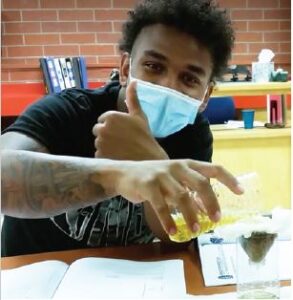
As part of the JSEP program, students conduct water filtration tests, learn basic coding, and build a business startup plan to encourage them to explore STEM careers. Credit: Space Foundation
Multiple studies are consistent on this point: Even as the global space economy continues to grow and generate high-paying jobs, U.S. students’ STEM proficiency and interest in advanced degrees in STEM careers continues to lag. Space economy statistics from 2020 indicate that key U.S. space sectors added nearly 5,000 jobs 1 and that the commercial space sector represents nearly 80% of the global space economy.2
Contrast that with national data from 2017 indicating U.S. students’ STEM proficiency declined as they advanced through their educational careers. In that study, 76% of fourth-graders scored as proficient at a basic level in science and 80% as proficient at a basic level in mathematics.3 By the 12th grade,4 only 70% scored as proficient in both subjects — for respective declines of 6% in science and 10% in mathematics.
Internationally, a 2015 study5 found that U.S. students fared poorly on the global stage. Although U.S. students could claim a baseline proficiency in scientific literacy, they still landed in 25th place globally. By the same measures for mathematics literacy, U.S. students could not claim a baseline proficiency and landed in 40th place globally.
A dearth of U.S. postsecondary STEM degrees appears to follow these trends. A study conducted in 2018 on the percentage of STEM-related degrees awarded found that compared with the other six space-faring nations (Germany, India, Japan, South Korea, Russia, and the United Kingdom), the U.S. ranked fourth for doctorate degrees awarded in STEM, and sixth for bachelor’s degrees awarded in STEM.6
Goals of the Junior Space Entrepreneur Program
Space Foundation’s JSEP program is one of a growing number of U.S. education initiatives being incorporated in schools around the country to boost student interest in STEM careers. JSEP, however, also combines another crucial element of success in the growing commercial space industry: The skills needed to sell big ideas and partnerships to investors and government agencies. The program culminates with students envisioning their own space companies, developing prototypes, and pitching them to a panel of space entrepreneurs.
The JSEP program launched in January 2020 but was long hamstrung by the inability to conduct in-person exercises and presentations amid the COVID-19 pandemic.
Now conducting regular programs again, JSEP teaches high school students STEM skills through an immersive educational experience with multiple exercises that tackle the challenges of a hypothetical Mars mission, delivering hands-on experience in robotics and coding. Students also learn the real-world applications of those skills by attending a discussion with an astronaut.
The astronaut component of the program really draws in students, JSEP Program Manager Alex Grab said. Former NASA astronaut, retired Air Force Lt. Col. Duane “Digger” Carey, has been the featured astronaut, and he has an unusual story that resonates with students.
“He really disliked going to school. But a few years after graduating high school, he had a dream to become a pilot and astronaut and then did what he had to do to make those dreams happen,” Grab said. “So, a lot of students can relate; perhaps they aren’t very excited to sit in a traditional classroom, but to get that first-person account from someone who overcame that and later flew to space — I think that’s really engaging to them.”
So far, the program achieved its goals locally, and Grab hopes to eventually expand it nationally and internationally.
Teaching the Importance of Failure
A lifetime of conditioning to avoid failure can be difficult for high school students to unlearn, especially when it comes to school projects. But scientists fail before they succeed, and that’s something JSEP impresses upon students — failure spawns some of the best discoveries and innovations. It’s especially important from the perspective of the space industry, where repeated testing and troubleshooting are crucial — and when a human crew is involved, learning from earlier failures can mean the difference between life or death.
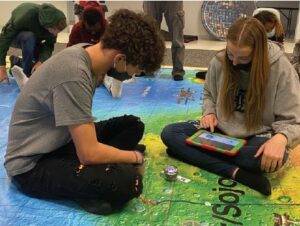
One aspect of JSEP coursework involves coding Sphero BOLTs into an orbit similar to that of the International Space Station. Credit: Space Foundation
One part of the program covers orbital mechanics. Students block-code Sphero BOLTs, small, robotic balls, to get them to an orbit similar to that of the International Space Station. Later in the program, they perform a similar exercise coding a Mars rover to navigate to a specific point on a large Mars map. Many students have never coded before, and it’s not an easy task. Grab recalled two students who just couldn’t grasp it on the first mission but succeeded on their second. “They came back to it with so much grit and perseverance like, ‘We’ve learned from this and we’re going to make it happen this time,’” she said.
Entrepreneurship Exercises Bring Students Out of Their Shells
In the final challenge of the program, students pitch their space businesses to a panel of entrepreneurial experts for evaluation. They present financials, identify their audience, and panelists ask them questions and give feedback. Getting grilled by a panel of established adult entrepreneurs could be an intimidating task at any age, let alone for a 16-year-old, but Grab is consistently impressed with the students’ grace under fire. Presentations and evaluations are followed by a Q&A session that allows students to pick the panelists’ brains about opening a business.
The JSEP team has witnessed students who were very reserved at the beginning of the program open up after collaborating on group tasks. Surveys tracking students after their participation back that up. Teachers at host schools report that many of the students are collaborating more in classes, some who didn’t have many friends at school are making new ones, and several gained the desire to develop and market their own businesses in the future.
Defense Education Grant Aims to Help Military and Low-Income Students
The JSEP courses presented last fall were made possible by a $1.5 million grant awarded by the Department of Defense’s National Defense Education Program (NDEP), allowing Space Foundation to accommodate four cohorts of roughly 30 students each across four school districts. Part of the requirement in accepting the grant was that the program serve two distinct audiences: low socioeconomic students and military students.
The program reaches into four Colorado school districts where an average of 42 percent of students meet the poverty guidelines for free and reduced school lunches. In those schools, more than 12 percent of students are identified as children of military members.
Illustrating the acute need for programs like JSEP are 2021 SAT test results7 from two schools where the program was later presented. One school had an SAT participation rate of only 75% — 5% lower than the state average — with their mean scores on the science and math portions coming in 11% lower than the state average. On the math portion, 58% of participants did not meet expectations (19% higher than the state average), and only 16% met or exceeded expectations (20% lower than the state average). Another host school had a better-than-average SAT participation rate of 85%, yet their mean scores on the science and math portions still came in at 8% and 9% lower than the state average, respectively.
JSEP leaders are in the process of tracking the academic progress of students reached through the program, with the goal of delivering metrics over a three-year period to measure outcomes. Reflecting on the realities of presenting at underserved schools, Grab recalled one program participant who was supporting his working parents by caring for his three siblings in addition to carrying a full-time job and attending school. After experiencing JSEP, he took the time to write Grab a letter expressing how much the program meant to him and how it changed his life — adding that he’ll encourage his younger siblings to do JSEP when they’re in high school.
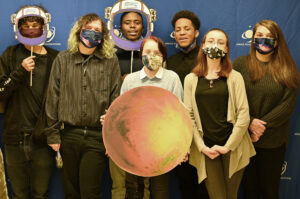
Post-survey results show after JSEP participation, students are more likely to take STEM classes and consider starting their own business. Credit: Space Foundation
More cohorts are planned, and by the end of the federal grant funding in May 2023, the program will have impacted 900 students from underserved communities. Grab personally loves that JSEP’s recent efforts have catered to underserved schools. “These are the kids that really have the potential, but they don’t get the opportunity. I think it’s so important that we’re providing these opportunities and showing these students that yes, you deserve this. Yes, we believe in you. And here’s your opportunity to really take ahold of it,” she said.
Post-program Survey Results
Surveys from 120 students conducted before and after the program showed that more students envisioned themselves as part of the STEM world who hadn’t prior to participating. Before the program, 47% of students surveyed stated that they either “agree[d]” or “strongly agree[d]” that they were interested in learning more about STEM topics. After the program, that combined figure rose to 70%.
The post-program survey also showed that more than half of participating students were interested in taking more STEM classes in the future; better understood that it’s OK for an experiment to fail; and felt that they were better able to learn in team settings. “I think we’re having a significant impact so far, going into these underserved communities and showing them that they too have a place in this industry,” Grab said.
Student comments on the survey were anonymous, but many illustrate the progress students made following the program. One student commented a favorite part of the experience was “building real-world models and figuring out how technical difficulties work in the space world.” Another appreciated “being treated like an adult and being held with such responsibility,” while a third student said, “I liked how much I learned about STEM and the activities we participated in.”
New Program to Get Students Started Even Younger
Following the success of the JSEP program, a companion program — Cadet Space Explorer Program (CSEP) — is in development to deliver similar presentations to middle school students.
Because the first step toward a mission to Mars will be establishing infrastructure on the Moon, CSEP will focus its activities on a lunar Artemis-themed mission, which will then dovetail nicely into the JSEP Mars mission theme when those students reach high school. The entrepreneurial aspects will remain, as CSEP students will design their own CubeSat prototypes and cultivate their business skills by proposing them to the entrepreneurial panels.
Grab is excited to build upon the program’s recent successes. “I think entrepreneurship and the space industry go hand in hand, and the more people we can impact with it, the better,” she said.

Andrew de Naray is a contributing writer for Space Foundation.
- Highfill, Tina, et al. “Updated and Revised Estimates of the U.S. Space Economy, 2012–2019.” January 2022. https://www.bea.gov/system/files/2022-01/Space-Economy-2012-2019.pdf. Accessed Feb. 17, 2022.
- Highfill, Tina, et al. “Updated and Revised Estimates of the U.S. Space Economy, 2012–2019.”
- American Welding Society. “Workforce Development.” https://www.aws.org/foundation/page/workforce-development. Accessed Feb. 7, 2022.
- Wellner, Paul, et. al., Deloitte Insights. “Creating pathways for tomorrow’s workforce today,” May 14, 2021. https://www2.deloitte.com/us/en/insights/industry/manufacturing/manufacturing-industry-diversity.html. Accessed Feb. 7, 2022.
- Organization for Economic Cooperation and Development, “Space Economy for People. Planet and Prosperity.” September 2021. https://www.oecd.org/sti/inno/space-forum/space-economy-for-people-planet-and-prosperity.pdf. Accessed Feb. 16, 2022.
- Organization for Economic Cooperation and Development, “Space Economy for People. Planet and Prosperity.”
- Hobbs, Zoe. The Space Report 2021 Q3, “2021 U.S. Labor Data Shows Benefits of Space-Sector Pay.” October 2021. https://thespacereport.org/resources/2021-tsrq3-space-industry-workforce-recovers-to-pre-pandemic-levels-guided-missiles-and-space-vehicles-saw-continued-growth-throughout-pandemic. Accessed Feb. 22, 2022.

